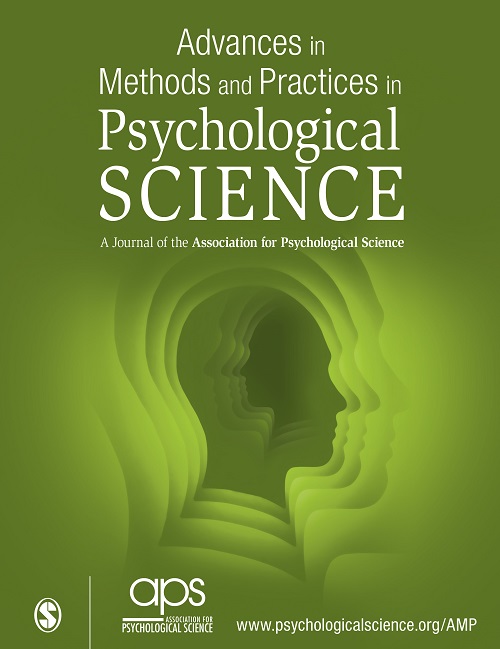教程:横截面回归中相互作用效应的功效分析
IF 13.4
1区 心理学
Q1 PSYCHOLOGY
Advances in Methods and Practices in Psychological Science
Pub Date : 2023-07-01
DOI:10.1177/25152459231187531
引用次数: 18
摘要
交互分析(也称为“适度”分析或“适度多元回归”)是线性回归分析的一种形式,旨在测试两个变量之间的关联是否在第三个变量的条件下发生变化。对与现有软件的交互进行功率分析是具有挑战性的,特别是当变量是相关且连续的时候。此外,尽管功率受到主要效应、它们的相关性和可变可靠性的影响,但如何将这些效应纳入功率分析还不清楚。R软件包InteractionPoweR和相关的Shiny应用程序允许只有很少或没有编程经验的研究人员执行基于分析和模拟的交互功率分析。至少,这些分析需要变量和样本量之间的Pearson相关性,并且可以选择性地指定其他参数,包括可靠性和变量所采用的离散水平的数量(例如,二进制或李克特量表)。在本教程中,我们将演示如何使用我们的包执行功率分析,并举例说明功率如何受到主效应、主效应之间的相关性、可靠性和变量分布的影响。我们还简要讨论了研究人员在进行功率分析时如何选择适当的相互作用效应大小。本文章由计算机程序翻译,如有差异,请以英文原文为准。
Tutorial: Power Analyses for Interaction Effects in Cross-Sectional Regressions
Interaction analyses (also termed “moderation” analyses or “moderated multiple regression”) are a form of linear regression analysis designed to test whether the association between two variables changes when conditioned on a third variable. It can be challenging to perform a power analysis for interactions with existing software, particularly when variables are correlated and continuous. Moreover, although power is affected by main effects, their correlation, and variable reliability, it can be unclear how to incorporate these effects into a power analysis. The R package InteractionPoweR and associated Shiny apps allow researchers with minimal or no programming experience to perform analytic and simulation-based power analyses for interactions. At minimum, these analyses require the Pearson’s correlation between variables and sample size, and additional parameters, including reliability and the number of discrete levels that a variable takes (e.g., binary or Likert scale), can optionally be specified. In this tutorial, we demonstrate how to perform power analyses using our package and give examples of how power can be affected by main effects, correlations between main effects, reliability, and variable distributions. We also include a brief discussion of how researchers may select an appropriate interaction effect size when performing a power analysis.
求助全文
通过发布文献求助,成功后即可免费获取论文全文。
去求助
来源期刊
CiteScore
21.20
自引率
0.70%
发文量
16
期刊介绍:
In 2021, Advances in Methods and Practices in Psychological Science will undergo a transition to become an open access journal. This journal focuses on publishing innovative developments in research methods, practices, and conduct within the field of psychological science. It embraces a wide range of areas and topics and encourages the integration of methodological and analytical questions.
The aim of AMPPS is to bring the latest methodological advances to researchers from various disciplines, even those who are not methodological experts. Therefore, the journal seeks submissions that are accessible to readers with different research interests and that represent the diverse research trends within the field of psychological science.
The types of content that AMPPS welcomes include articles that communicate advancements in methods, practices, and metascience, as well as empirical scientific best practices. Additionally, tutorials, commentaries, and simulation studies on new techniques and research tools are encouraged. The journal also aims to publish papers that bring advances from specialized subfields to a broader audience. Lastly, AMPPS accepts Registered Replication Reports, which focus on replicating important findings from previously published studies.
Overall, the transition of Advances in Methods and Practices in Psychological Science to an open access journal aims to increase accessibility and promote the dissemination of new developments in research methods and practices within the field of psychological science.

 求助内容:
求助内容: 应助结果提醒方式:
应助结果提醒方式:


